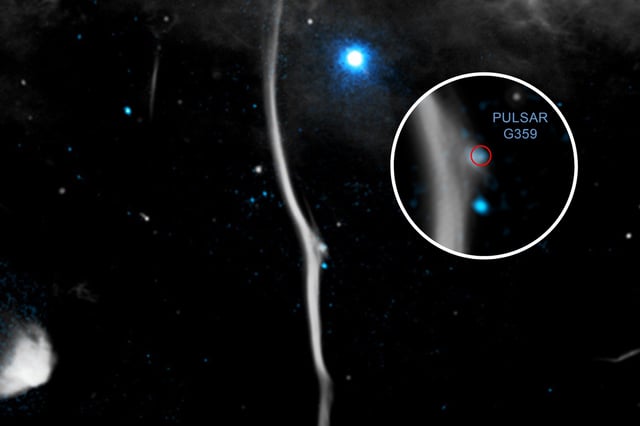Overview
- Researchers identified a fracture in the elongated filament G359.13, located 26,000 light-years from Earth near the Milky Way's center.
- The fracture was likely caused by a high-velocity pulsar colliding with the filament at speeds between 1 and 2 million miles per hour.
- X-ray data from NASA's Chandra Observatory and radio observations from MeerKAT and the Very Large Array revealed the pulsar at the fracture site.
- G359.13, one of the longest galactic filaments at 230 light-years, is threaded by magnetic fields and energized particles emitting radio waves.
- The findings, published in the Monthly Notices of the Royal Astronomical Society, include possible additional X-ray emissions from accelerated electrons and positrons near the pulsar.

